Purnululu is a World Heritage place, and deservedly so. We flew over the area two years ago (see our 2008 blog link top left) and were staggered at the unique rock formations there. Anyone who sees photographs would ask themselves “how did that come about”, so here is a brief explanation and please forgive the tutorial. The Osmand Range is 1.8 billion years old. Through glaciations and high erosion massive quantities of river rounded stones and rocks were washed from the eroding range into a basin and accumulated to a depth of about 300 metres, forming a largely homogeneous conglomerate about 360 million years old. The range was then uplifted and that induced lines of weakness in the deposited conglomerate, fracturing it into regular blocks. Normal weathering has now reduced these blocks into 300 metre high domes, almost too numerous to estimate. In the southern end of the park 30 kilometres distant, the conglomerate was regularly interspersed with layers in which more clay is present. These clayey layers hold slightly more water, allowing cyanobacteria to survive in these layers and produce a coating that leads to more resistance to weathering. So these metre or so thick layers stick out more and are darker. The effect is a dome just like a classic beehive (I’ve never seen one but perhaps in biblical times?).
Equally surprising is that this extraordinary formation was not really known to white Australians until 1982, when a documentary making team were in the vicinity and overheard a mustering helicopter pilot describing these strange domes to a mate in the bar. He flew them into The Bungle Bungle Range the next day; they scooped the pool and started a tourist rush that has changed the whole local economy. Seeing the place on foot limits you to a minimum of short walks that doesn’t begin to scratch the surface; an overnight walk up Picanninny Gorge is an option. But it is enough to experience clefts and chasms I doubt are equalled elsewhere, such as Echidma Chasm left, which narrows to a one person space. We had two nights there and by dint of early dawn starts managed to experience all of the sites on our own, avoiding the bus parties and the 36 degree heat of midday.
Out of Purnululu now, heading resolutely south, and sensing a return to home and hearth, albeit still a few thousand kilometres away. Halls Creek is a town with a reputation that must be updated. Reports were not favourable, but we found a delightful small town where we could re-provision before starting our southerly journey in earnest, back down the Tanami Road to Alice Springs. Our travelling Jones buddies had given us a tip to go to Caroline Pool about fourteen kms east of the town, where we found, again, a wonderful camp spot for the night, all on our own.We had toyed with the idea of
 heading north west via the Buntine and Buchanan roads and joining the Stuart Highway north of Tennant Creek. This would have avoided a repeat of the Tanami but would have been an extra 700kms and most of that on bitumen – not our favoured surface. More to the point we had to make sure we got ourselves in front of a TV screen on election night! We are very fortunate in having friends in interesting places - our new Alice Springs friends Prue and Andrew took us along to a great 50th cum election party. As you might have an inkling how we vote there is no need to make even passing reference to that night (though the company at the party was great!) except perhaps to suggest this could be the shake-up that politicians on both sides need. Go for it Bob!
heading north west via the Buntine and Buchanan roads and joining the Stuart Highway north of Tennant Creek. This would have avoided a repeat of the Tanami but would have been an extra 700kms and most of that on bitumen – not our favoured surface. More to the point we had to make sure we got ourselves in front of a TV screen on election night! We are very fortunate in having friends in interesting places - our new Alice Springs friends Prue and Andrew took us along to a great 50th cum election party. As you might have an inkling how we vote there is no need to make even passing reference to that night (though the company at the party was great!) except perhaps to suggest this could be the shake-up that politicians on both sides need. Go for it Bob! 



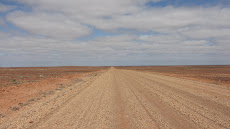
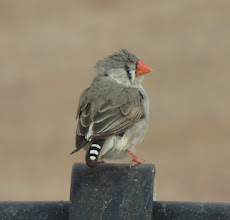
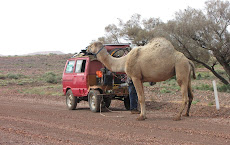
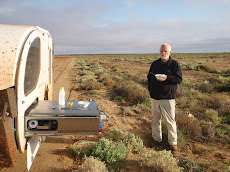
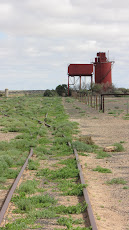
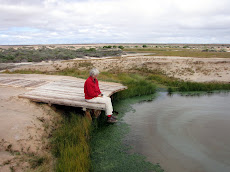




















































































No comments:
Post a Comment